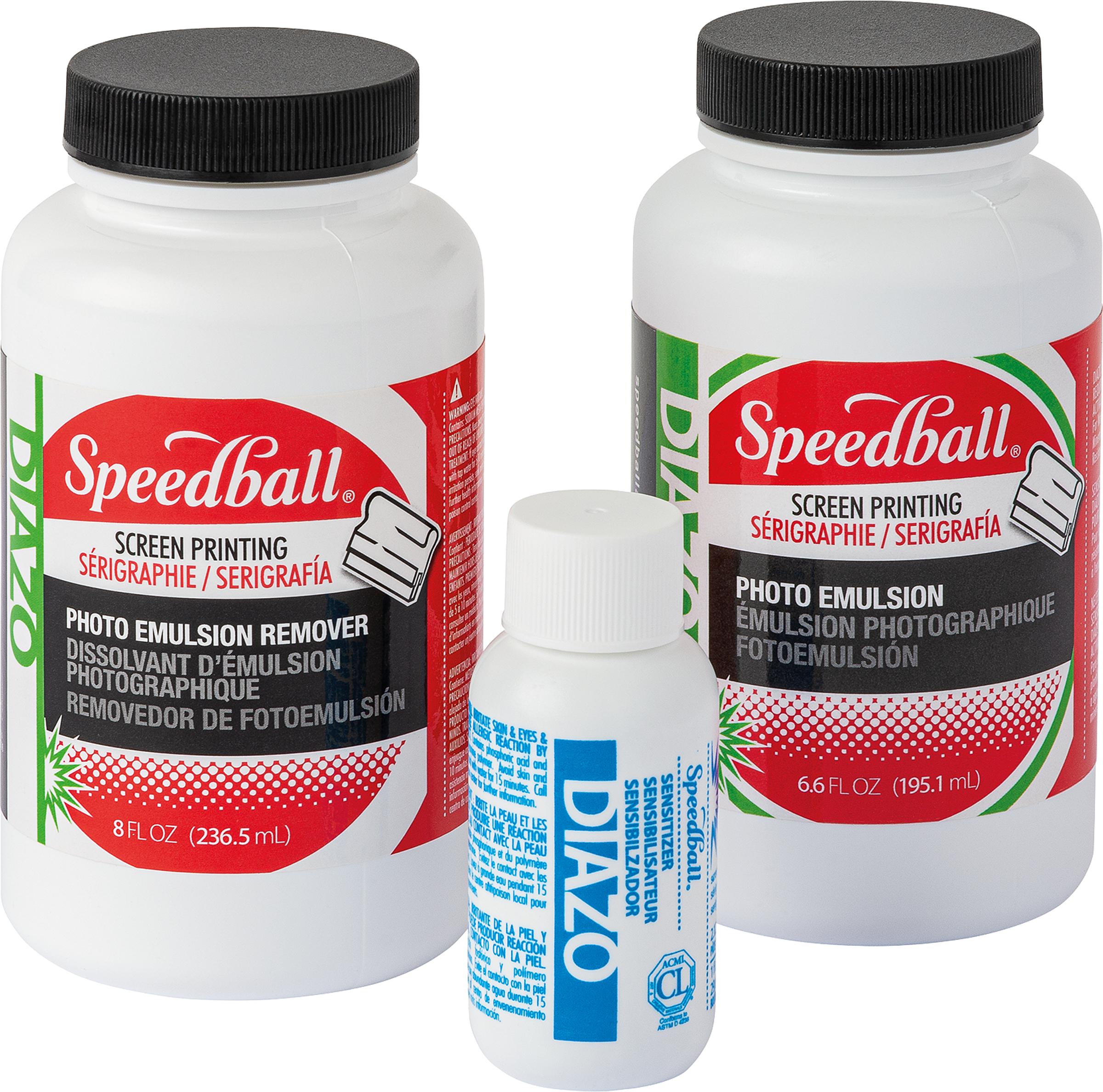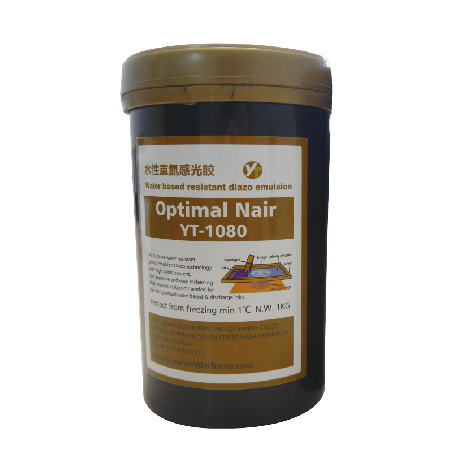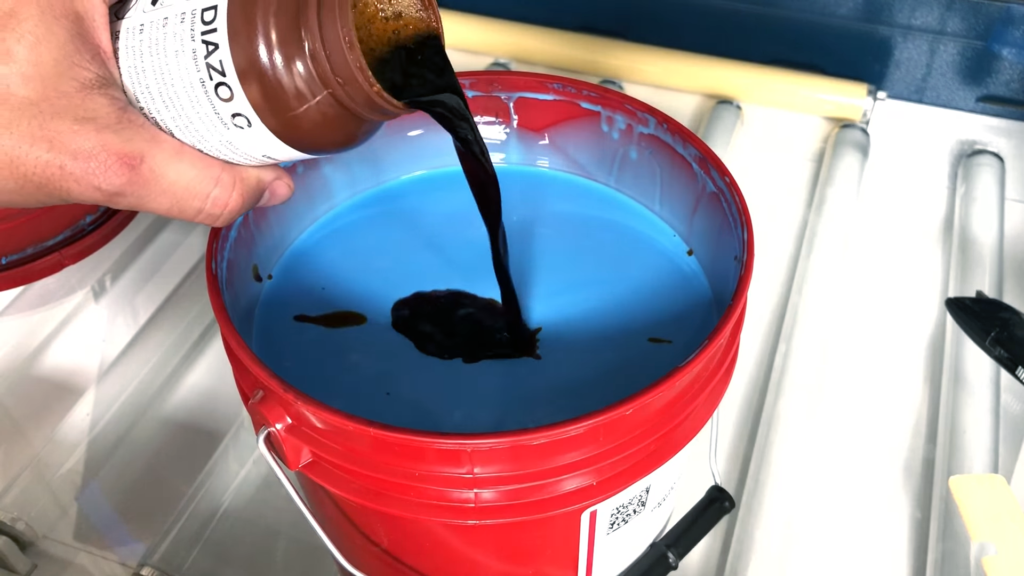

#Speedball photo emulsion rinse how to#
You can watch a video about how to coat a screen here, or read on for instructions.įirst, half-fill the coating trough with pre-mixed photo emulsion. 225mm troughs are perfect for our A4 screens, 315mm troughs for our A3 screens etc. You will need a trough that is slightly narrower than the width of the mesh on the screen.

The aim of coating screens is to fill all of the holes in the weave of the mesh, not to deposit a couple of mm on top of the mesh. To coat your screen, use a coating trough. You can watch a video showing how to mix up your emulsion here. It needs to be thoroughly mixed with water in the bottle before it is added to the emulsion. The sensitiser is in powder or gel form in a tiny quantity in the bottle. Photo emulsion is made from two parts: the emulsion itself and sensitiser. If you are using new emulsion, it is best to mix it an hour or so in advance so that all the bubbles can disperse. We would advise coating the screens in a room with subdued lighting – no need for a safe light but subdued light does allow you a little more time to coat your screen. Make sure you wash the cleaner thoroughly off the screens and then leave the screen to dry fully. The best products we have found for cleaning screens prior to coating is Speedball Speed Clean. This should remove any trace of grease. To start with you must ensure that your screen is clean and dry, any grease (even from fingers) can cause problems with the emulsion adhering correctly. A successful Photo Emulsion Stencil will depend on many things: the wattage of the lamp, the timings, the distance from the screen and the thickness of the emulsion. We are often asked for guidance with screen printing and the most common request is for help with exposing screens.īenjamin Franklin is quoted as saying “By failing to prepare, you are preparing to fail” – I don’t know how good he was at screen printing but it sounds like he had some experience! One of the most common problems is, when using a new light source, to assume the exposure times will be the same as the guidance/previous lamps. Transferring a Linocut to Inkjet Film using Adigraf Water Soluble Ink.JMeet the Maker: Nick Morley (with giveaway!).JOn The Course: Creating Life Drawing Mono Screen Prints.Squeegees, Scoop Coaters and Hinge Clamps.Use a hair dryer to flash dry the print immediately after printing and then reprint over top in exact register. Use a soft base under the fabric to be printed. Problems: Textile ink prints not opaque enough. Use a couple of humidifiers or "sick-room" vaporizers in the printing area. Use the flood stroke technique given in the instructions.įor the Acrylic Screen Inks and Textile Inks, mix with the Retarder Base. 1 photo flood, will reduce the required exposure time and resultant light bounce-back. Using a more intense light source, such as the BBA No.

See relevant "Possibilities" under "Photo emulsion will not wash out to create a stencil."įailure to use a black, non-reflective background under the screen during exposure. Problem: Some small details on Photo Emulsion screen did not wash out completely.

Tracing paper or film not sufficiently transparent. Improper mixing of emulsion and sensitizer. Problem: Too much or all Photo Emulsion washed out of screen after exposure. More efficient reflectors will require a higher bulb height and/or less exposure time.Īrtwork did not make proper contact with screen. The instructions lists exposure time and heights for a "disposable foil pie tin" reflector. The sensitized screen was exposed to too much light or heat before exposure to art work. More than 12 hours (at 70 degrees F.) elapsed before the sensitized screen was exposed (Speedball Bichromate System). There must not be any heat build-up (above 105 Degrees F) on the stencil during exposure. Heat as well as light will "set" the photo emulsion. Problem: Photo Emulsion will not wash out to create a stencil.Īrtwork not prepared with a visually or photographically opaque material. Scrub with a soft bristle brush and a dish washer powder/ water solution. Screen may have been used with solvent based materials or the sizing may not have completely washed out of the screen fabric. Problem: Drawing Fluid, Screen Filler or Photo Emulsion won't adhere to screen.


 0 kommentar(er)
0 kommentar(er)
